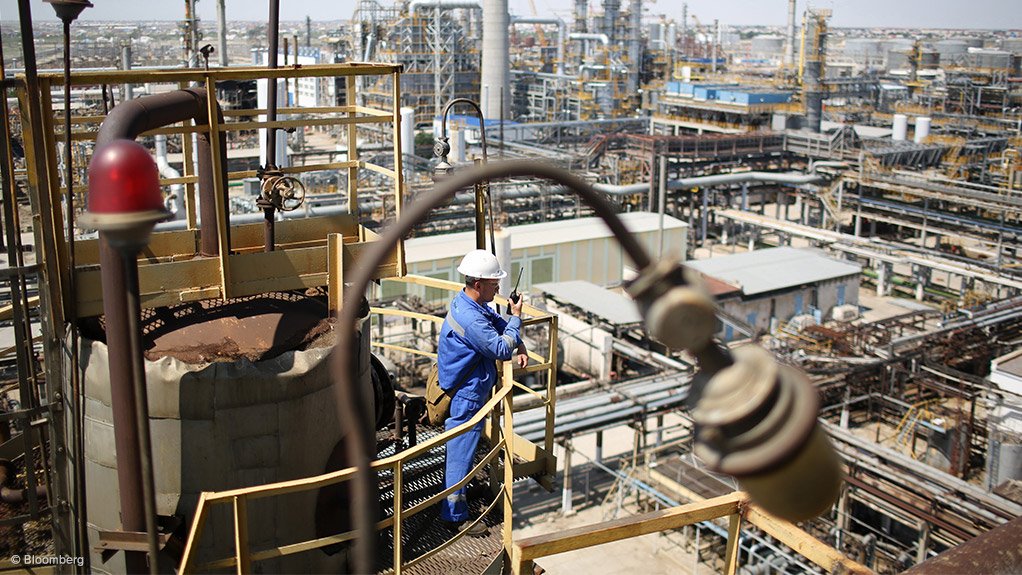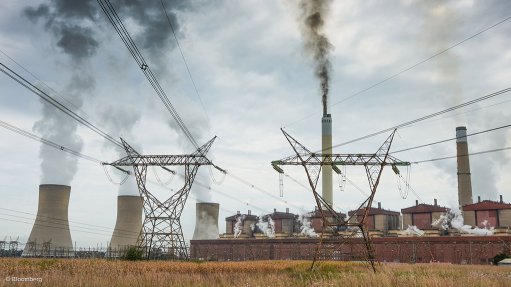S African refineries pulled in two



LOCAL REFINERIES South African oil refineries face two main challenges
Photo by Bloomberg
IMO 2020 South African refineries are considering the potential retrofitting of existing equipment to meet the 0.5% sulphur content cap
Photo by Bloomberg
Local oil refineries will find it difficult to adjust to the International Maritime Organisation’s (IMO’s) new sulphur cap of 0.5% by 2020 for residual marine fuels, and the Clean Fuels Two Programme in South Africa, says South African Petroleum Industry Association (Sapia) strategic projects head Kevin Baart.
IMO 2020, and the implementation of the Clean Fuels Two Programme are the two main challenges facing South African oil refineries at the moment, Baart claims.
“In 2016, the IMO announced that, by January 1, 2020, the sulphur content in marine bunker fuels will need to be reduced to 0.5% from the current level of 3.5%. It is a challenge that is experienced not only locally but globally.
“Some industry experts reckon it can cost $1-billion for each refinery to install the required plant and equipment to reduce the sulphur content of residual fuels to meet the cap. No South African refiner is planning this type of investment.”
However, Baart points out that European and American refiners will not struggle as a result of already imposed sulphur limits of 0.1% in bunker fuels in current Emission Control Areas (ECA) that have been established on the east and west coast of the US, as well as in the North Sea and the Baltic. ECAs are sea areas in which stricter controls have been established to minimise airborne emissions from ships.
Worldwide refineries that have invested or are planning to invest in such plant and equipment to reduce the sulphur content in bunker fuels made the decision prior to the IMO’s announcement in 2016. “To invest $1-billion in the required equipment entails gaining the necessary board approvals which can be a protracted process, as the board needs to ensure that the money is being used appropriately,” Baart highlights.
He adds that the traditional refining industry, including South Africa’s, will be hard-pressed by the IMO 2020 policy, as the refineries will produce a heavy sulphur fuel oil for which the refineries will not have a market. “The fuel will go into a ‘big black hole’ where it will likely compete with coal on an energy basis.” Nevertheless, bunker fuel meeting the sulphur cap will still be supplied from distillate material.
With regard to the Clean Fuels Two Programme, Baart notes that the big challenge is the compliance investment required from refiners, which does not provide refiners a return on capital. At this stage, the implementation of the programme has been delayed because of the lack of finalisation of a cost recovery mechanism for refiners with government.
The African Refiners and Distributors Association (ARA) stated in September last year that they would commit to meeting the AFRI-4 specifications, which aim to lower the sulphur content allowed in diesel and petrol, by 2020 to 50 ppm (w/w) and 150 ppm (w/w) respectively.
Some of the recommendations made by the ARA include the establishment of import quality improvement to AFRI-4 levels by 2020 or earlier, and the improvement of domestic specifications as soon as possible, in line with current refinery production quality levels.
However, they also noted that there would be difficulties in raising funds for large capital investments.
To address the investment challenge, Sapia is looking to government to provide assistance so that refineries can make the necessary investments, by providing financial and other assistance such as tax benefits.
“Obviously, there will be benefits to the country in terms of maintaining the existing refinery fleet of all six refineries, and the attendant benefits associated with that in terms of employment, as well as upstream and downstream linkages in the economy.”
Article Enquiry
Email Article
Save Article
Feedback
To advertise email advertising@creamermedia.co.za or click here
Comments
Press Office
Announcements
What's On
Subscribe to improve your user experience...
Option 1 (equivalent of R125 a month):
Receive a weekly copy of Creamer Media's Engineering News & Mining Weekly magazine
(print copy for those in South Africa and e-magazine for those outside of South Africa)
Receive daily email newsletters
Access to full search results
Access archive of magazine back copies
Access to Projects in Progress
Access to ONE Research Report of your choice in PDF format
Option 2 (equivalent of R375 a month):
All benefits from Option 1
PLUS
Access to Creamer Media's Research Channel Africa for ALL Research Reports, in PDF format, on various industrial and mining sectors
including Electricity; Water; Energy Transition; Hydrogen; Roads, Rail and Ports; Coal; Gold; Platinum; Battery Metals; etc.
Already a subscriber?
Forgotten your password?
Receive weekly copy of Creamer Media's Engineering News & Mining Weekly magazine (print copy for those in South Africa and e-magazine for those outside of South Africa)
➕
Recieve daily email newsletters
➕
Access to full search results
➕
Access archive of magazine back copies
➕
Access to Projects in Progress
➕
Access to ONE Research Report of your choice in PDF format
RESEARCH CHANNEL AFRICA
R4500 (equivalent of R375 a month)
SUBSCRIBEAll benefits from Option 1
➕
Access to Creamer Media's Research Channel Africa for ALL Research Reports on various industrial and mining sectors, in PDF format, including on:
Electricity
➕
Water
➕
Energy Transition
➕
Hydrogen
➕
Roads, Rail and Ports
➕
Coal
➕
Gold
➕
Platinum
➕
Battery Metals
➕
etc.
Receive all benefits from Option 1 or Option 2 delivered to numerous people at your company
➕
Multiple User names and Passwords for simultaneous log-ins
➕
Intranet integration access to all in your organisation


















